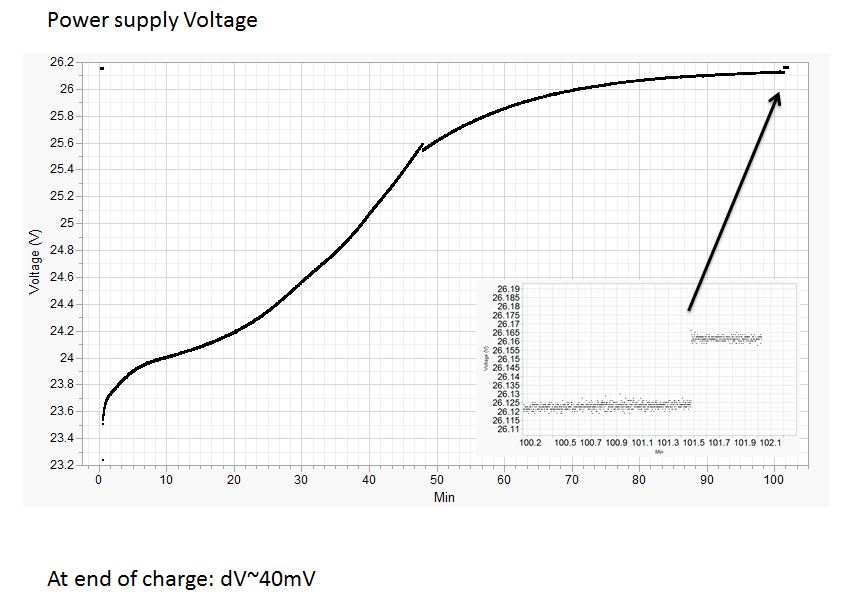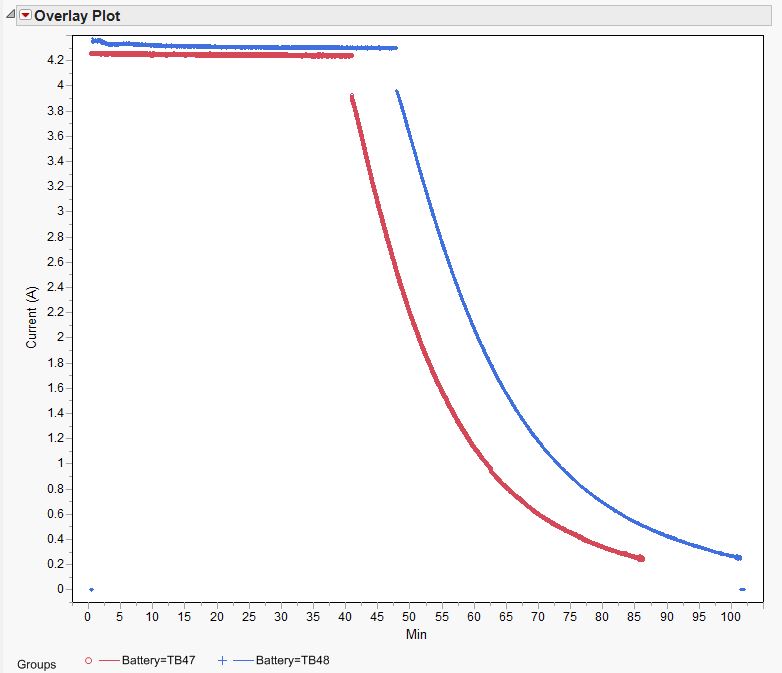Hello folks,
I'm building an automated charger that will charge up to 8 (inspire batteries and/or remotes).
It is based on an arduino that controls relays and monitors the voltage, current and power taken by the battery been charged.
Note this is a sequential charger and uses the standard 100W brick charger. The idea is that the arduino can detect when the battery is fully charged (since the battery turns itself off) and move to next battery untill they are all charged.
So I wanted to check what voltage, current and power changes are detected when the battery being charged stops drawing power. I added an SD card I can log V,A and W for the whole charging time and here are the results:
With the regular 100W brick PSU:
The TB48 is charging at constant current ~4.3A for about 48min (I guess it depends on the starting charge\battery health). My PSU puts out up to 110W apparently.
The remaining time the current decreases gradually for anoter 50min or so and then the battery reaches full charge (by its internal logic) and turns itself off.
At turn off the PSU voltage jumps up by 40mV (no more load), the current drops to 0 from ~250mA, and the power drops from ~6.5W to zero. So it is extremely easy to detect when the battery turning off just from the current or power measures.
Anyway I'm attaching the graphs, and maybe I'll let you guys know when the whole thing is finished.
BTW, the way I have it running it can log ~8.5 measures per second (Way overkill I know). The csv file I generate is about 2MB per battery onto a 1GB SD card
I know). The csv file I generate is about 2MB per battery onto a 1GB SD card  .
.
Ciao!
Vincenzo
I'm building an automated charger that will charge up to 8 (inspire batteries and/or remotes).
It is based on an arduino that controls relays and monitors the voltage, current and power taken by the battery been charged.
Note this is a sequential charger and uses the standard 100W brick charger. The idea is that the arduino can detect when the battery is fully charged (since the battery turns itself off) and move to next battery untill they are all charged.
So I wanted to check what voltage, current and power changes are detected when the battery being charged stops drawing power. I added an SD card I can log V,A and W for the whole charging time and here are the results:
With the regular 100W brick PSU:
The TB48 is charging at constant current ~4.3A for about 48min (I guess it depends on the starting charge\battery health). My PSU puts out up to 110W apparently.
The remaining time the current decreases gradually for anoter 50min or so and then the battery reaches full charge (by its internal logic) and turns itself off.
At turn off the PSU voltage jumps up by 40mV (no more load), the current drops to 0 from ~250mA, and the power drops from ~6.5W to zero. So it is extremely easy to detect when the battery turning off just from the current or power measures.
Anyway I'm attaching the graphs, and maybe I'll let you guys know when the whole thing is finished.
BTW, the way I have it running it can log ~8.5 measures per second (Way overkill
Ciao!
Vincenzo







